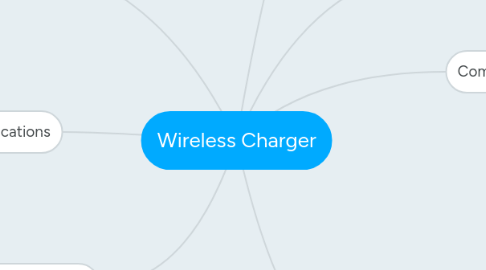
1. Disadvantages
1.1. expensive
1.1.1. increasing complexity + cost of manufacturing
1.2. low performance
1.2.1. low efficenyoncy
1.2.2. longer charging time
1.3. limitation
1.3.1. don't allow charge "on-the-go" (must be left on the pad)
1.3.2. difficult to connect to the devices
2. Applications
2.1. smart phones
2.2. laptops
2.3. tablets
2.4. electric toothbrushes
2.4.1. first consumer goods of this techine
3. Safety Problem
3.1. overheat
3.1.1. devices
3.1.2. wireless charger pads
4. Advantages
4.1. convenient
4.1.1. no need for cable
4.2. safe
4.3. durable
5. Background
5.1. development
5.1.1. late 1800s - early 1900s
5.1.1.1. wireless broadcasting & power transmission
5.1.2. 2008
5.1.2.1. Qi norm
5.1.3. 2012
5.1.3.1. Powermat (PMA)
5.1.4. 2012
5.1.4.1. Alliance for Wireless Power (A4WP)
5.1.4.1.1. not available now
5.2. battery lifespan
5.3. technology
5.3.1. standards
5.3.1.1. Qi
5.3.1.1.1. Inductive charging
5.3.1.1.2. 100 - 205kHz
5.3.1.1.3. 5mm of coil distance
5.3.1.1.4. widest global use
5.3.1.2. Powermat
5.3.1.2.1. inductive charging
5.3.1.2.2. 277 - 357kHz
5.3.2. inductive charging
5.3.2.1. magnetic field
5.3.2.2. primary & secondary coil
6. Comparison
6.1. differences between wireless charger and plug charger
6.1.1. function
6.1.2. security

